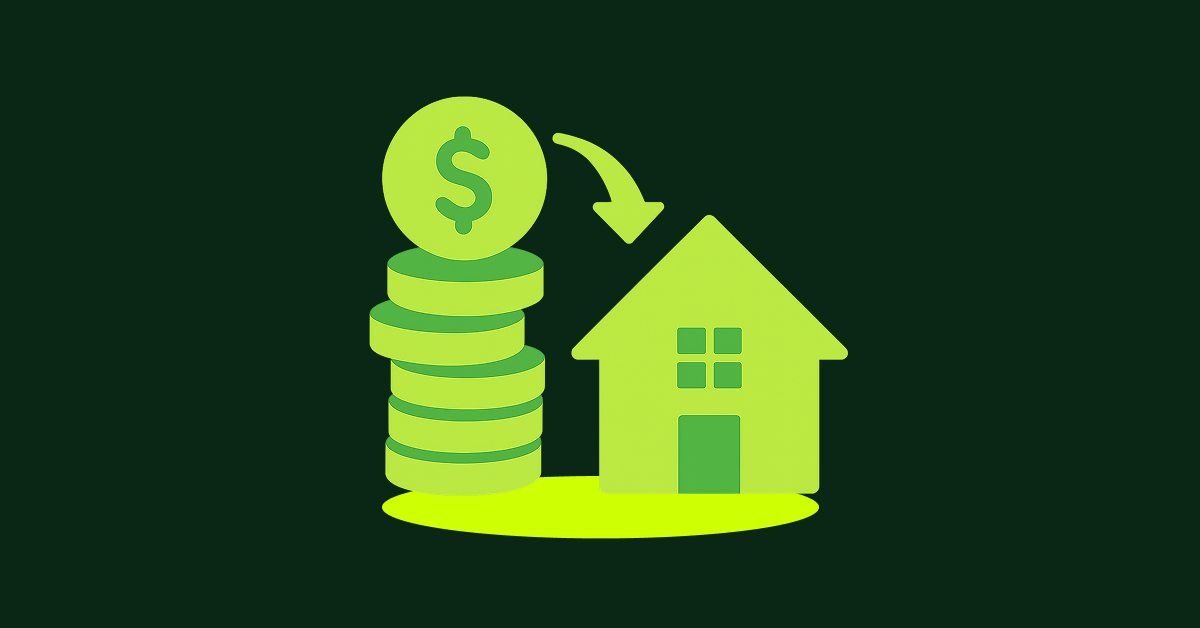Down Payment on a House: How Much Do You Really Need...

If you’re thinking about buying a home, you’ve no doubt started saving up for a down payment. Generally, mortgage lenders like to see a 20% down payment, but do you really need that much? No, and in fact, no-money-down mortgages are more common than you might think. Let’s take a look at how you can buy a house with less than 20% down.
It’s important to note that if you put down less than 20%, you’ll be subject to PMI, or private mortgage insurance. This insurance is required by lenders to protect them in the event that you default on your loan. It’s not a bad thing, but it is an added expense that you’ll have to pay until you have 20% equity in your home.
What is a down payment?
The down payment is the money you pay up front when you buy a house. It’s the difference between the purchase price and the mortgage amount.
For example, if a home is $200,000 and you get a mortgage for $170,000, your down payment would be $30,000.
When you make a down payment, you’re telling the lender that you have skin in the game and are committed to the purchase.
It also means you own a portion of the home, which can be important if you have to sell the house before you’ve paid off the mortgage.
The more you put down, the more you own and the less you owe.
How much down payment do you need for a house?
The down payment amount you’ll need in order to buy a house depends on the type of loan you get and your credit score. Here are the most common options:
Conventional loans: 5% to 20% down
Conventional loans backed by Fannie Mae and Freddie Mac are the most common mortgage loans. The minimum down payment is 5% for a single-family home, and 15% for a two- to four-unit property. If you put down less than 20%, you’ll be required to pay for private mortgage insurance (PMI) until you reach 20% equity in your home.
Fannie Mae’s HomeReady loan and Freddie Mac’s Home Possible loan are two conventional loan programs that allow you to put down as little as 3% and offer discounted mortgage insurance rates.
Government loans: 0% to 3.5% down
FHA loans are popular among first-time homebuyers and those with lower credit scores. The minimum down payment is 3.5%, but if you have a credit score of 500 to 579, you’ll need to put 10% down. If your credit score is 580 or higher, you’ll only need to put 3.5% down.
VA loans are available to active-duty military, veterans, and surviving spouses. There’s no minimum down payment, and you won’t be required to pay for mortgage insurance. However, there is a funding fee, which can be rolled into the loan amount.
USDA loans are available in rural areas to low- to moderate-income borrowers. The USDA loan program offers 100% financing, so there’s no down payment required.
Jumbo loans: 10% to 20% down
A jumbo loan is a mortgage that exceeds the conforming loan limits set by the Federal Housing Finance Agency (FHFA). In most areas, the conforming loan limit is $548,250, but in high-cost areas, it can be as high as $822,375. Jumbo loans typically require a higher down payment, usually between 10% and 20%.
How to save for a down payment
Saving for a down payment on a house can be daunting, but it’s not impossible. Here are some tips to help you save.
1. Set a goal
Start by figuring out how much you’ll need to save. A good rule of thumb is to plan on saving 20% of the home’s purchase price, but you can also look at homes in your area and use their list prices to estimate how much you’ll need to save. Once you have a goal in mind, you can figure out how much you need to save each month to reach it.
2. Create a budget
Take a close look at your income and expenses, and see if there are areas where you can cut back. For example, you could try cooking at home more often, canceling subscriptions you don’t use, or finding ways to save on your monthly bills. Then, put the money you save toward your down payment.
3. Open a dedicated savings account
Consider opening a high-yield savings account that’s dedicated to your down payment. This can help you keep your down payment money separate from your other savings, and you might be able to earn more interest on it.
4. Automate your savings
Set up automatic transfers from your checking account to your down payment savings account. This way, you won’t have to think about saving — it will happen automatically.
5. Save any windfalls
If you get a bonus at work, a tax refund, or a cash gift, put it in your down payment savings account. This can help you reach your goal more quickly.
6. Consider your timeline
If you’re not planning to buy a home for a few years, you might want to consider investing your down payment money in the stock market. While there are risks involved, you could potentially earn a higher return on your money than you would in a savings account. Just be sure to choose low-risk investments, and be prepared to leave your money in the market for at least three to five years.
Can you buy a house with no down payment?
Yes, it is possible to buy a house with no down payment. In fact, the U.S. Department of Agriculture (USDA) and the Department of Veterans Affairs (VA) both offer loan programs that allow eligible borrowers to buy homes with no down payment.
The VA loan program is available to active-duty service members and veterans, while the USDA loan program is available to borrowers who are buying a home in a rural area.
In addition, there are some conventional loan programs that allow borrowers to buy a home with no down payment. However, these programs typically require the borrower to pay for private mortgage insurance (PMI) or to have a higher credit score.
What if you can’t afford a down payment?
If you don’t have the cash to make a down payment, you have three options:
• Look for a low- or no-down-payment loan program. There are many loan programs available to help homebuyers who don’t have a lot of cash for a down payment, including FHA loans, VA loans, USDA loans, and HomeReady loans. Some conventional loan programs also allow for low down payments.
• Ask for help. You can ask a family member or close friend to give you money for the down payment. Just be aware that there are rules about who can give you the money and how it can be given.
• Save up. If you can’t get a low- or no-down-payment loan and you don’t have anyone who can give you the money, you’ll have to start saving. Luckily, there are lots of ways to save up for a down payment, and some of them may be easier than you think.
The bottom line
When it comes down to it, you don't need to put 20% down to buy a home. However, you do want to make sure you have a good idea of what you can afford.
If you're unsure, consider speaking with a financial advisor. They can help you understand your financial situation and assist you in making the best decision for your individual needs.
Conclusion
If you’re thinking of buying a home, it’s important to do your research and understand the options available to you. There are many ways you can buy a home, even if you don’t have a large down payment.
The best thing you can do is reach out to a loan officer at a mortgage company and get pre-qualified so you can understand how much home you can afford and what options are available to you.
